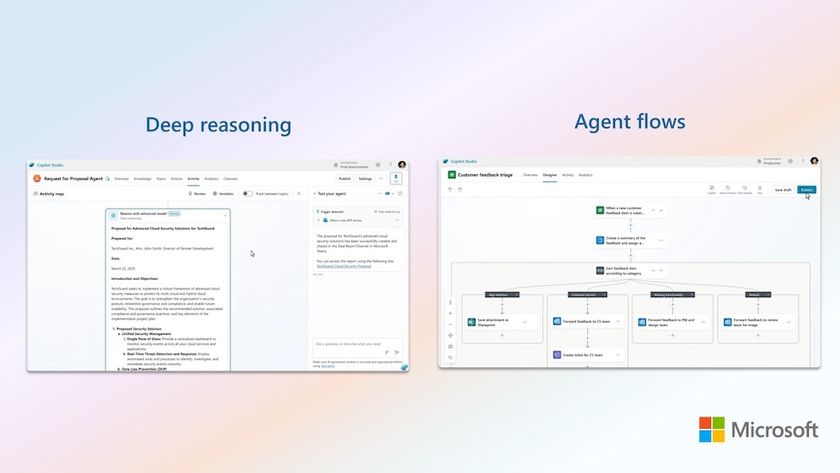Hybrid cloud: the best of both worlds
The benefits of hybrid cloud

If 2020 taught us anything it is that you never know what is around the corner, but in truth businesses have always had to deal with peaks, troughs, highs, lows, famine and feast. All of these obstacles and pathways have one thing in common and that is the need for businesses to adapt to changes which are both planned and unplanned in order to maximize or minimize the impact that these opportunities or threats pose.
The big shift in remote working has been largely forced upon companies as they try to navigate the COVID pandemic. This only goes to further push the point home that agility is key in so-called ‘normal’ times as much as in a crisis, and what businesses actually need is a plan that allows them to adapt to change.
Utilizing hybrid cloud models can ensure businesses provide the best user experience for both today and tomorrow. Indeed, its future effectiveness has already been proven; Forbes has identified it as one of the top 10 digital transformation trends for 2021. With the correct architecture and design, organizations should be able to achieve optimized user experience without either throwing away all efforts up to now, or spending time and resources on infrastructure they may never use.
Many businesses are already reaping the benefits of hybrid cloud, but for those still on the fence about making it the basis for IT infrastructure, here are a few of its more notable benefits…
Scalability, but easy and efficient
It can be difficult for small or new businesses to optimally scale their IT infrastructure due to its traditionally hefty cost. But hybrid cloud environments allow businesses to scale in order to accommodate specific workloads. Organizations are therefore able to implement automation rules in the cloud that ensure the ability to scale resources up and down, as dictated by business demand. The ability to have this choice has proven very important throughout the COVID-19 pandemic, with workforces continually switching between the office and working from home. This customization ensures an optimized environment that performs efficiently to take advantage of unlimited resources based on demand-driven usage.
Downtime? What downtime?
It soon became clear during the COVID-19 pandemic that, in order to carry on succeeding and making a profit, businesses had to ensure they were running at all times. This meant making data continually accessible, even during times of peak demand. And there is more to this than simply backing up and replacing content on a cloud platform.
This is one reason why a hybrid cloud solution is frequently considered the key component in business continuity solutions. Hybrid clouds ensure critical data is replicated to a cloud in a different location, thus providing data insurance in the event of any natural or technological disaster.
Are you a pro? Subscribe to our newsletter
Sign up to the TechRadar Pro newsletter to get all the top news, opinion, features and guidance your business needs to succeed!
A faster journey to new markets
One of the principal reasons for an organization to choose to move to the cloud is to make expanding their business into new regions easier – and hybrid cloud platforms provide the agility needed to quickly enter new markets at an affordable cost.
Companies of varying sizes are able to get a jump on global initiatives, as on-demand self-service greatly reduces the cost of investment. Cloud resources can be automated and spun up swiftly to grow when needed without wasting any unnecessary resources. Thanks to the reductions in time and low costs of entry provided by hybrid cloud solutions, companies of all sizes can increase their competitive advantages.
Enhanced security
One other aspect of the COVID-19 pandemic, the resulting lockdowns, and dispersed workforces, was a greater cybersecurity risk. Although security fears are decreasing as cloud usage grows, threats to security this year (exemplified in a shocking number of ransomware attacks, for example) must mean that taking the correct security measures remains a top priority and an ongoing challenge for any organization to manage properly.
Incorporating a private cloud solution within a hybrid cloud ensures greater control over the design and architecture of the system, while providing a higher level of data security in comparison to public cloud solutions.
A competitive edge
When it comes to innovative technologies, hybrid cloud solutions offer far more opportunities than any other type of infrastructure. They provide benefits in the form of customer satisfaction due to more customized infrastructure. And in light of the pandemic, and the accelerated digital transformation it provoked, there are very few companies yet to adopt some type of cloud solution: indeed, according to Centrify, 51% of UK business leaders say their shift to a cloud computing-based business model has saved their company from collapse during the pandemic.
What the future holds
It’s clear that cloud adoption is showing no signs of slowing and it is now truer than ever that businesses that don’t embrace it in some way will undoubtedly be left behind. What is important to remember, however, is that the technology should work for a business, not against it. Hybrid cloud infrastructure’s flexibility and scalability does exactly this: providing businesses the real power to adapt to change dynamically, as the environment and circumstances around them change. And with the final stages of Brexit completed, another time of change and adaptation, it is more vital than ever for organizations to be able to face changes to data integrity and sovereignty at home or on a global scale head-on.
- Terry Storrar, Managing Director at Leaseweb UK.
- We've reviewed the best cloud storage.
Terry Storrar, Managing Director at Leaseweb UK.
















